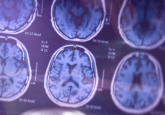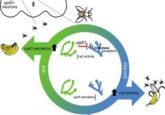Could coffee be the key ingredient for weight loss?

One cup of coffee is enough to stimulate your brown fat and could be key to beating diet-related diseases.
Research from the University of Nottingham (UK) has found that one cup of coffee is enough to stimulate the body’s fat-fighting defenses and could potentially play a role in beating diet-related diseases such as obesity and diabetes.
Brown fat, or brown adipose tissue, is one of two types of fat found in mammals. Compared to its white fat counterparts that are primed for energy storage and contribute to visceral fat, brown fat is predominantly used for generating body heat by burning calories. Despite being initially only thought to be found in babies and hibernating mammals, it was recently found that human adults can have brown fat as well.
“Brown fat works in a different way to other fat in your body and produces heat by burning sugar and fat, often in response to cold. Increasing its activity improves blood sugar control as well as improving blood lipid levels and the extra calories burnt help with weight loss. However, until now, no one has found an acceptable way to stimulate its activity in humans,” explained study co-director Michael Symonds.
-
Human fat storage: how we became the ‘fat primate’
-
Coffee: mobilizing the bowel and meddling with the microbiome
-
How much coffee is too much?
“This is the first study in humans to show that something like a cup of coffee can have a direct effect on our brown fat functions. The potential implications of our results are pretty big, as obesity is a major health concern for society and we also have a growing diabetes epidemic and brown fat could potentially be part of the solution in tackling them.”
Following stem cell studies investigating the effects of caffeine on brown fat, the team used their pioneering thermal imaging technique to trace brown fat reserves in vivo. This non-invasive technique allowed them to identify brown fat and externally assess its heat producing capabilities.
“From our previous work, we knew that brown fat is mainly located in the neck region, so we were able to image someone straight after they had a drink to see if the brown fat got hotter,” Symonds added.
“The results were positive, and we now need to ascertain that caffeine as one of the ingredients in the coffee is acting as the stimulus or if there’s another component helping with the activation of brown fat. We are currently looking at caffeine supplements to test whether the effect is similar. Once we have confirmed which component is responsible for this, it could potentially be used as part of a weight management regime or as part of glucose regulation program to help prevent diabetes,” he concluded.





